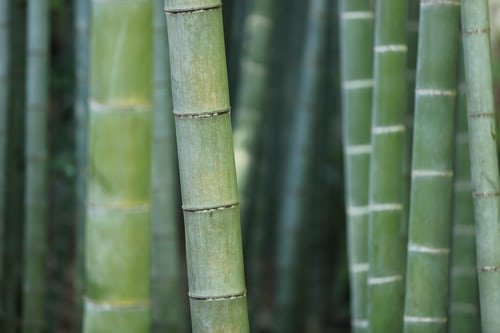Bamboo Air Freshener: What You Should Know!
0Shares
Bamboo charcoal has been a common filtration medium and medical component in Asia for centuries, especially in Japan, China, Korea, and Taiwan. However, the uses and benefits of this material have become apparent to Westerners in recent years. It is an efficient, environmentally friendly deodorizer and purifier with a plethora of additional uses. Is bamboo air freshener good for you?
Bamboo Air Freshener: The Natural Deodoriser

Conventional air fresheners mask bad smells, which usually do more harm than good. How much has your chemically scented apple/flower/sea breeze air freshener turned into a swirling combination of sweaty legs with just enough sugar to make you gag?
Bamboo carbon adsorbs and removes odor without trying to cover the horrible smells of clogging perfume. What’s more, the sickly sweet air freshener contains toxins that are not only toxic to humans, animals, and the atmosphere but also threatens to cause asthma attacks and allergic reactions.
Removing horrible smells without causing new ones is particularly useful in cars and other small spaces. Instead of subjecting yourself to a delicious fragrance of wet dog and lavender, you should use a bamboo carbon deodorant car that extracts the smell instead of adding to it. This super material won’t make you, your passengers, and your trusted, four-legged friend choke on chemical fumes.
Bamboo carbon is natural, fragrant-free, allergen-free, and non-toxic. Enabled bamboo carbon fresheners, such as the all-natural Purggo Car Eco-Purifier, are cleaner, healthier, and last much longer than traditional models.
Leaving activated carbon in the sun for an hour or two a month eliminates any moisture it retains and refreshes, and these air fresheners last for more than a year.
You may also use charcoal to spruce up your bedroom, bathroom, refrigerator, and freezer; refresh your exercise bag, shoes, hockey, and sports equipment, and eradicate unpleasant smells from pet areas and diaper and compost pails. Alternatively, use it to remove the smell of paint and other chemicals in newly renovated parts of your home.
1. Keeps You Breathing At Ease
In addition to eliminating odors, bamboo carbon also purifies air by removing toxins from the atmosphere. It absorbs ammonia, carbon dioxide, benzopyrene, and other smog components and decreases the concentration of environmental toxins that cause allergies and asthma.
Charcoal is applied to air filters to eliminate toxic chemicals in commercial and industrial environments, and some sealed cat litter boxes also come with air vents covered with carbon filters that neutralize odors by adsorbing ammonia.
2. Improve The Quality Of Water
Bamboo carbon purifies water by eliminating contaminants and increases the quality of water by releasing minerals. When placed in water, carbon dioxide softens the water, absorbs harmful chemicals such as chlorine, and releases calcium, magnesium, and other natural minerals.
Activated carbon is a popular filter medium in tropical aquariums because it improves water quality and removes nitrogen and toxic products from aquatic life. Drop a small piece of activated bamboo carbon into a jug or glass to filter the drinking water, or be kind to your skin and apply some to your bath water to soften the water.
3. A Myriad Of Uses Inside And Around The House
The porous structure of bamboo charcoal makes it an ideal dehumidifier. It absorbs atmospheric moisture and releases it back into the atmosphere when the humidity level drops. You may use it in drawers, closets, and cabinets to keep clothes and linen-fresh or in the basement, garage, or storage area to avoid mold. Hold some of them in the crisp drawer to extend the lifetime of fruit and vegetables by two to three days.
Bamboo carbon dioxide has high mineral content and is an excellent source of potassium, sodium, calcium, and iron, which it releases when used as a fertilizer or as a water purifier. It helps aerate the soil and serves as a moisture regulator in the garden by storing excess water and releasing it when the soil is dry. If your bamboo charcoal air freshener comes to an end of its useful life, you can extract the charcoal from your bag and use it as a fertilizer and natural insecticide for your indoor plants, your lawn, or your garden.
Activated charcoal is healthy for your skin. Several soaps and beauty goods rely on carbon dioxide to remove bacteria, contaminants, and impurities from the skin.
Bamboo Air Freshener: Is Bamboo Charcoal Safe?

You can use bamboo charcoal around your children and pets with full peace of mind since the charcoal is harmless even when consumed. In reality, many people in Asia are taking charcoal tablets to treat stomach pains, and it’s safe to use on pets. The tablets absorb poisons, allowing gastric contaminants to pass through the system without the need for synthetic medicines.
Bamboo Air Freshener: What Is Bamboo Charcoal Exactly?
In basic words, bamboo charcoal is a carbon dioxide extracted from bamboo. Most people know the charcoal used for barbeque, but few know exactly what it is or how it is made. Charcoal is a carbon formed by a heating process that extracts non-carbon content from plant or animal content. Although the process sounds complex, it simply involves heating bamboo (or any other material) in the oven at a certain temperature until the oxygen supply is removed.
Bamboo carbon has a massive surface area by weight ratio, and a single gram of bamboo carbon has a surface area of up to 600 square meters (or 717.6 square yards). Activated bamboo charcoal is taking a step further.
The activation process will double the surface area to 1,200 square meters (1,435 square yards) per gram. The activation process, patented in South Korea, is a well-maintained secret but involves the granulation of the carbon and the passage of steam through the granules. Standard bamboo carbon and activated carbon have the same adsorption properties, but activated carbon better retains the substances it adsorbs.
Bamboo Air Freshener: How Is Bamboo Charcoal Working?
The natural adsorption characteristics of Bamboo carbon, combined with its significant surface area, make it an important adsorbent. Its millions of pores are capable of trapping and storing vast amounts of pollutants and other harmful substances. Charcoal absorbs odor and pollutant particles by trapping them while air or water flows through the pores, purifying the surrounding air or water in the process.
Bamboo charcoal is four times more porous than standard wood charcoal, which greatly increases its quality.
Adsorption Vs. Absorption
You will also come across the term ‘adsorption’ when you learn about charcoal. This isn’t a typo. During adsorption, carbon dioxide attracts substances that cling to and settle on its surface. In contrast, absorption (with a “b”) involves the distribution of one substance to another without any special attraction. Because of the quality of its fibers, the rag retains water, not because of physical attraction.
Scientific evidence confirms the efficacy of bamboo carbon in odor management and the reduction of toxic greenhouse gases.
Bamboo Air Freshener: Is Bamboo Sustainable?

Bamboo is becoming an increasingly popular material for environmentally conscious consumers because it is one of the most sustainable resources available. As long as farmers harvest it responsibly, bamboo can be regenerated indefinitely without human intervention or synthetic fertilizers, herbicides, or pesticides.
Moso bamboo, the most common form used in commercial applications, is the largest subtropical wooden bamboo, rising to a height of up to 75 feet and a 7-inch diameter at maturity. It only takes five years for plants to mature. Plants grow 40 to 50 feet in the first few months and can grow more than 3 feet a day in their native habitat. This bamboo is used for anything from apparel to flooring to paper (and, of course, for the manufacture of activated bamboo carbon).
In addition, the young shoots of the plant, which have a delicate flavor, form an important part of Japanese cuisine.
You Need To Know The Powers Of Bamboo Charcoal!
Asian countries have been using bamboo charcoal for air and water purification for thousands of years. It is also used as a medication to eliminate toxins from the body, even today. This substance is so porous that only one gram has a surface area of 600 square feet. Because of the extremely porous nature of bamboo charcoal, people also call it a supernatural material.
Purification Of The Air
When air flows through bamboo carbon, the pores and cavities of the material capture odor molecules that cause unwanted odors, you can think of it as a large sponge that draws in and traps the smell.
While the impact is not immediate, bamboo charcoal lasts more than 365 days and does not release harmful chemicals into the atmosphere. Instead of using artificial perfume to cover up bad odors such as traditional air fresheners, it eliminates the odor itself.
Bamboo charcoal is particularly useful for people with allergies and asthma because it is free of allergens and odors. Being natural and non-toxic means it’s perfect for children and pets, too.
In addition to reducing odor, bamboo carbon dioxide can enhance air quality by trapping air contaminants such as carbon monoxide, ammonia, and benzopyrene.
Final Words
Bamboo carbon is an environmentally friendly and environmentally responsible substitute for chemical and synthetic deodorizers, purifiers, and fertilizers. It releases precious minerals, is 100% natural, and safe to use for pets, children, and people with allergies or asthma.
Scientific studies confirm the adsorption capabilities of carbon dioxide and have various uses in industrial and household applications. Best of all, you can use activated charcoal with confidence – it is good for you and the environment from cultivation to disposal.
0Shares
